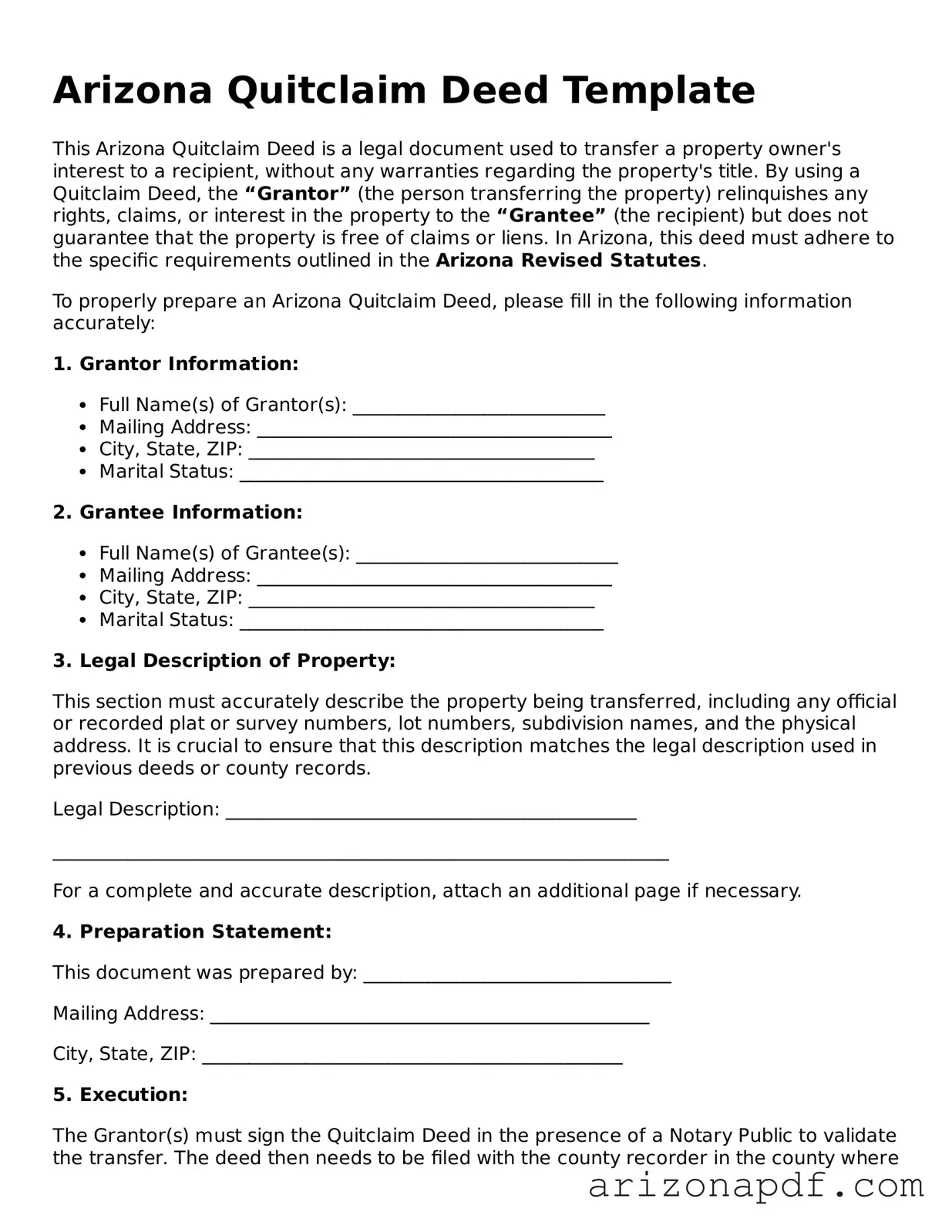Arizona Quitclaim Deed Template
This Arizona Quitclaim Deed is a legal document used to transfer a property owner's interest to a recipient, without any warranties regarding the property's title. By using a Quitclaim Deed, the “Grantor” (the person transferring the property) relinquishes any rights, claims, or interest in the property to the “Grantee” (the recipient) but does not guarantee that the property is free of claims or liens. In Arizona, this deed must adhere to the specific requirements outlined in the Arizona Revised Statutes.
To properly prepare an Arizona Quitclaim Deed, please fill in the following information accurately:
1. Grantor Information:
- Full Name(s) of Grantor(s): ___________________________
- Mailing Address: ______________________________________
- City, State, ZIP: _____________________________________
- Marital Status: _______________________________________
2. Grantee Information:
- Full Name(s) of Grantee(s): ____________________________
- Mailing Address: ______________________________________
- City, State, ZIP: _____________________________________
- Marital Status: _______________________________________
3. Legal Description of Property:
This section must accurately describe the property being transferred, including any official or recorded plat or survey numbers, lot numbers, subdivision names, and the physical address. It is crucial to ensure that this description matches the legal description used in previous deeds or county records.
Legal Description: ____________________________________________
__________________________________________________________________
For a complete and accurate description, attach an additional page if necessary.
4. Preparation Statement:
This document was prepared by: _________________________________
Mailing Address: _______________________________________________
City, State, ZIP: _____________________________________________
5. Execution:
The Grantor(s) must sign the Quitclaim Deed in the presence of a Notary Public to validate the transfer. The deed then needs to be filed with the county recorder in the county where the property is located. Recording fees may apply.
Signature of Grantor(s): ___________________________________
Date: ____________________________________________________
Notary Public Acknowledgment
This section will be completed by a Notary Public, certifying that the Grantor(s) appeared before them and acknowledged signing the deed voluntarily for its stated purpose.
County of _______________:
State of Arizona
On _______________ (date), before me, ________________________ (Notary's name), personally appeared ________________________, known to me (or satisfactorily proven) to be the person(s) whose name(s) is/are subscribed to the within instrument and acknowledged that he/she/they executed the same for the purposes therein contained. In witness whereof I hereunto set my hand and official seal.
Notary's Signature: ___________________________________
Date: _______________________________________________
